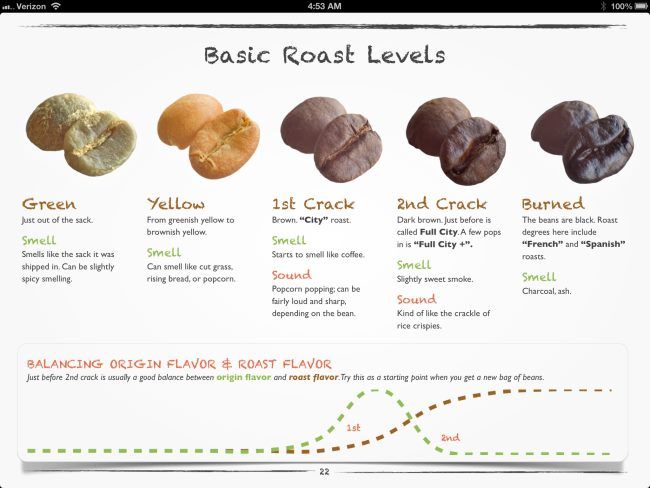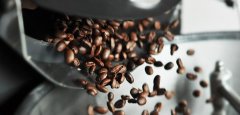Six skills and methods of roasting high-quality coffee
After writing, I found that the most difficult thing to talk about coffee roasting is the different understanding of the terms used to describe roasting. I will keep explaining the reason and purpose of using this concept. I try to avoid being polite and give practical information directly.
Coffee roasting is an extremely complex process, but we can grasp it by three reference variables.
Caramelization value: deep and shallow
Maturity: too much, less than
Temperature curve: emergency and loss of temperature
No matter how baked, the results occur in these six categories. The six categories also correspond to the corresponding taste, so superimposed to produce different taste experiences.
Caramelization value:
This variable can sometimes dominate all three variables, so when someone discusses the caramelization value with you, you don't know what he is talking about. Usually, the temperature of the bean determines the caramelization value (surface).
Deep baking: absorbs more heat than shallow baking, producing more dry distillates and more complex Mayna reactions. Deep baking less acid, taste block, smoky, bitter. Of course, some experts can also make deep-roasted coffee delicious. It is generally believed that deep-roasted coffee is mellow and sweeter. But I'm telling you, it's not true.
Shallow baking: absorb less energy, more sour, taste sour and bright, with floral aroma. It is generally believed that light baking is not mellow and not sweet. Sometimes this is the case, but it is by no means caused by shallow baking. Shallow baking can definitely be very sweet and thick.
Medium roasting: most boutique roasters use beans in this range to make espresso beans, and quite a few are used to make single beans or even omnipotent beans.
Maturity:
Not deep baking is too much, shallow baking is not as good as it is. Don't be silly, maturity is not distinguished by surface caramel values. The conclusion that deep baking is not sweet and light baking is sweet is based on the concept of maturity. As long as it can be baked thoroughly, no matter what the baking degree, it can be very thick and sweet.
What is it like to bake thoroughly? It just doesn't have those unpleasant tastes, such as grass, peanut, grain, spice and so on. And it is fully exploded so that water can easily enter and bring out soluble flavor substances. Perfect baking is extremely difficult, which often hits the baker and sighs.
Not as good as: causes uncomfortable grass smell and less soluble flavor substances.
I have tasted the coffee of many boutique roasters around the world, most of which fall into the category of low quality. This is really the sadness of the industry. This has far-reaching implications in three ways:
Reduce the effective extraction.
Reduce customers' desire to buy and drive away coffee drinkers who are used to anxious taste.
Dry mouth and dead acid are not as common as the taste. No matter what the quality of raw beans is, you can drink them. We spend a high price to buy high-quality raw beans, not to dry out the population. We are "boutique" coffee, so we have to be worthy of the word "boutique". It is absolutely impossible for guests to get the quality of fine goods.
In what ways are you inferior?
If you find that your beans are ground more finely with the same caramelized value on the surface, you are likely to fall behind.
If you need more time to extract when you concentrate, you just can't.
If your beans are difficult to crush with your fingers, you are likely to be inferior.
Break a ripe bean and observe the inner and outer color. If there are obvious different colors, the inner layer is 100% inferior.
Deep baking is not as good as a reduction, but it is not the best. This does allow the inner layer to receive more heat, reduce the smell of grass and increase soluble flavor substances. But at the same time, the outer layer will pass! Resulting in too much difference between the inside and the outside. The only solution is to give the right amount of heat at the right time so that the inner and outer layers are as average as possible. Only in this way can you travel freely between deep baking and shallow baking without worrying about being scorched on the outside but still green on the inside. Again, as long as it can be baked thoroughly, no matter what the degree of baking, it can be very thick and sweet.
Guo: it is true that there are more soluble flavor substances and no more unpleasant grass smell. But it also makes the delicious food disappear and become tasteless. Bake Kenya or Colombia until it is close to coke, is this still called a boutique?
Bake the curve:
A batch of beans, roasted to the back, coffee beans are very dry and fragile, the slightest change in temperature can make or destroy a batch of beans.
If the climbing temperature accelerates after an explosion, scorched coffee will be produced. It is characterized by not sweet, bitter, even if not deep-baked beans. Lightly baked beans can also be scorched, astringent and dry. Looking at this dry, unsweet, sour cup of coffee, Shang Ho of the square mile coffee roaster called it "bad film", which can ruin the atmosphere of the whole party.
If you stop climbing for a period of time after an explosion, it is called loss of temperature. Sometimes it even drops some temperature. The more serious the loss of temperature, the more serious the loss of temperature. Do not look at the curve, but from the outside of the bean is said to be unable to tell whether the temperature loss. Loss of temperature leads to a thin taste, like chewing wax, acidity and hollow uncomfortable sweetness.
If there is no acceleration and no stagnation, it will still climb warm after an explosion. This is the ideal baking curve. At first glance, it sounds unlikely. Think of the last car that stopped at the throttle. Before and during an explosion, it needs to accelerate quickly, and this kinetic energy allows the curve to crawl slowly until the bean comes out. The ideal state to stop baking is to crawl slowly after an explosion, and the climbing temperature is close to or reaches 0 degrees when the bean temperature is released. This avoids the situation of urgency and loss of temperature.
To sum up, consider
After the introduction of the six categories, we can now correctly discuss coffee roasting.
This cup of coffee is lightly roasted and fully mature. -it means bright, sweet, thick and delicious!
This cup of coffee is deep-roasted and immature. -it means bitter, not sweet, grassy.
This cup of coffee is lightly roasted and fully mature, but the curve is too fast. It means bright, but dry.
This cup of coffee is deep-roasted and fully mature. -it means it's not bad, it's sweet, it's thick, it's not sour, I hope it's not too dry.
This cup of coffee is medium-roasted and immature. This is the current situation of boutique coffee, some sour, some sweet, but not thick, non-distinctive, not in place. Slightly grassy, slightly prickly, mediocre, and perhaps with some other inferior taste.
Of course there are more generalizations, but you already have these three reference variables and six categories, and coffee roasting can be more accurate and efficient in the future.

Important Notice :
前街咖啡 FrontStreet Coffee has moved to new addredd:
FrontStreet Coffee Address: 315,Donghua East Road,GuangZhou
Tel:020 38364473
- Prev

The principle and process of roasting basic coffee
Coffee roasting is a very rigorous science. With the longing and mystery of coffee roasting, Chongqing Brista Coffee West Point training College brings you into coffee roasting teaching today. The following is a summary of coffee roasting teaching for your reference. The principle and process of coffee roasting we must first understand that raw beans are hard seeds in coffee berries, moisture,
- Next

Effect of different roasting degree on coffee flavor
In the career planning of baristas, with the increasing popularity of boutique coffee in recent years, coffee roasting has become one of the hot learning programs, and new occupations related to it have become more and more mature. Roasters, cup testers, and baristas seem to be three independent occupations. but they have something in common. In addition to the inherent quality of raw beans, the taste of coffee mostly depends on roasting. Incorrect
Related
- Beginners will see the "Coffee pull flower" guide!
- What is the difference between ice blog purified milk and ordinary milk coffee?
- Why is the Philippines the largest producer of crops in Liberia?
- For coffee extraction, should the fine powder be retained?
- How does extracted espresso fill pressed powder? How much strength does it take to press the powder?
- How to make jasmine cold extract coffee? Is the jasmine + latte good?
- Will this little toy really make the coffee taste better? How does Lily Drip affect coffee extraction?
- Will the action of slapping the filter cup also affect coffee extraction?
- What's the difference between powder-to-water ratio and powder-to-liquid ratio?
- What is the Ethiopian local species? What does it have to do with Heirloom native species?

